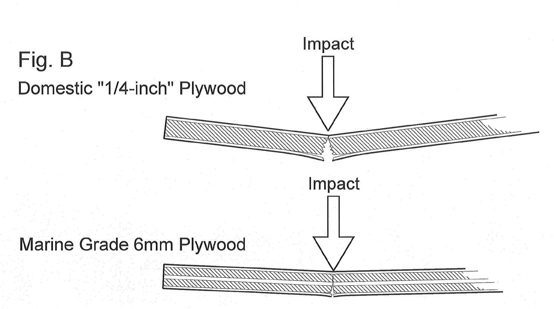How Many Sheets of Plywood Do I Need: The Ultimate Guide
To determine how many sheets of plywood you need, calculate the total square footage of the area to be covered and divide it by the square footage of one sheet of plywood. For example, if each sheet covers 32 square feet and your area is 320 square feet, you’ll need 10 sheets of plywood.
When starting a construction project, it’s essential to accurately estimate the materials required, especially when it comes to plywood. Whether you’re building a new structure or renovating an existing one, plywood is a versatile and commonly used material in construction.
To ensure you have the right amount of plywood on hand, it’s crucial to calculate the quantity needed based on the size and scope of your project. By following a few simple steps, you can determine the precise number of plywood sheets required, thus avoiding any wastage or last-minute trips to the hardware store.
Understanding Plywood Sheet Sizing
The key to a successful plywood project is understanding plywood sheet sizing, as it determines how many sheets you’ll need for your project. By knowing the standard plywood sheet dimensions and how to calculate plywood area, you can accurately estimate your materials and avoid unnecessary expense or waste.
Standard Plywood Sheet Dimensions
Standard plywood sheets come in 4-foot by 8-foot dimensions, providing a total area of 32 square feet. However, plywood can also be found in larger sizes such as 4-foot by 12-foot or 5-foot by 5-foot, as well as smaller sizes for specialized applications. Understanding these standard dimensions is crucial when determining how many sheets you need for your project.
Calculating Plywood Area
When calculating the area of a plywood sheet, it’s essential to know the dimensions of the sheet. The formula for finding the area of a rectangle, length multiplied by width, applies here. For example, a standard 4-foot by 8-foot plywood sheet has an area of 32 square feet. By multiplying the number of sheets needed by the area of each sheet, you can quickly determine the total plywood area required for your project.
Determining Project Requirements
Determining the project requirements is essential before starting any plywood-related construction project. Assessing the elements of your project and estimating the quantity of plywood sheets needed are vital steps that dictate the success of your endeavor.
Itemizing Project Elements
Before embarking on your plywood project, it’s crucial to itemize all the necessary elements that will require plywood. Whether it’s for constructing furniture, building a shed, or any other woodworking endeavor, make a comprehensive list of all the components that will require plywood. This could include shelves, cabinet doors, walls, flooring, or any other specific parts of your project.
Estimating Plywood Sheet Needs
Once you have itemized the project elements, the next step is estimating the quantity of plywood sheets needed. This can be done by measuring and calculating the surface area of each component that requires plywood. For example, if you need to cover a wall that measures 8 feet by 10 feet, calculate the total surface area in square feet. This allows you to determine the number of plywood sheets required based on the size and dimensions of each project element.

Factoring In Waste And Errors
When planning a plywood project, it’s crucial to account for waste and potential measurement errors to ensure you have enough material on hand. Factoring in these variables can prevent costly delays and additional expenses. By considering waste and errors, you can streamline the plywood procurement process and minimize the risk of running short on material.
Accounting For Cut Waste
When estimating plywood needs, it’s essential to consider the waste generated during cutting. Depending on the complexity of your cuts and the skill of the person handling the saw, a certain percentage of the plywood can end up as unusable scraps. To account for this, it’s recommended to add an additional 10-15% to your total plywood requirement. This extra allowance ensures that even with wastage, you will have sufficient usable material to complete your project.
Adjusting For Measurement Mistakes
Measurement errors can lead to significant material shortages if not accounted for. Whether due to miscalculations or inaccuracies in cutting, it’s important to factor in potential mistakes. One way to mitigate this risk is by double-checking all measurements and calculations. Moreover, a 5-10% margin of error should be added to the plywood quantity needed to accommodate any unforeseen measurement mistakes or inaccuracies. By doing so, you can avoid coming up short on material and ensure a smooth project execution.
Considering Additional Factors
When considering the number of sheets of plywood needed for a project, it’s important to factor in additional considerations that may impact your requirements. Beyond the basic measurements, weather-related considerations and plywood quality and grade analysis can play a crucial role in determining the quantity of plywood required for your project.
Weather can significantly impact the amount of plywood needed. In areas prone to high humidity, excessive rainfall, or extreme temperature fluctuations, plywood is more susceptible to warping and deterioration. Therefore, in such environments, it’s advisable to use a higher grade and quality of plywood, and potentially increase the quantity to account for potential damage.
Plywood Quality And Grade Analysis
The quality and grade of plywood can vary widely, with each impacting the structural integrity and longevity of the material. Higher-quality plywood is more resistant to moisture, warping, and has a smoother finish, making it a preferred choice for outdoor or high-moisture applications. Lower-grade plywood may require more frequent replacement, subsequently necessitating a larger initial purchase to cover potential replacement needs.
Practical Tips For Plywood Purchasing
When it comes to purchasing plywood for your upcoming project, it’s essential to consider practical tips for plywood purchasing. From determining the right sheet size to cost-effective shopping strategies, these tips can help you make informed decisions and streamline the plywood purchasing process.
Efficient Sheet Sizing Selection
Choosing the right sheet size of plywood is crucial to ensuring efficiency and minimizing waste. Keep in mind the specific dimensions required for your project to avoid purchasing more than necessary. Consider the following factors to select the most efficient sheet size:
- Measure the intended area where the plywood will be used to calculate the needed dimensions.
- Opt for larger sheet sizes when applicable to reduce the number of seams and improve structural integrity.
- Utilize cutting optimization techniques to maximize the use of each sheet and minimize leftover scraps.
Cost-effective Shopping Strategies
Adopting cost-effective shopping strategies can help you save money while obtaining high-quality plywood for your project. By applying the following strategies, you can make the most of your plywood purchase:
- Compare prices from various suppliers to identify the most cost-effective options without compromising on quality.
- Consider purchasing plywood in bulk or bundles to take advantage of volume discounts.
- Explore the availability of factory seconds or remnants, which may offer substantial savings for certain projects without sacrificing performance.
Frequently Asked Questions On How Many Sheets Of Plywood Do I Need
How Do I Calculate The Number Of Plywood Sheets Needed For A Project?
To determine the number of sheets needed, measure the area to be covered and divide by the area of a single sheet. Account for wastage and extra cuts to ensure accurate estimation.
What Are The Standard Sizes Of Plywood Sheets Available In The Market?
Plywood sheets are commonly available in 4′ x 8′ dimensions, but other sizes such as 4′ x 10′, 5′ x 5′, and 5′ x 10′ are also accessible for specific applications.
What Are The Different Grades Of Plywood And Their Recommended Uses?
Plywood grades range from A-D, with A being the highest quality and D being more suitable for rough construction. Choose the grade based on the intended application to ensure optimal performance and durability.
Conclusion
Knowing how many sheets of plywood you need is crucial for your project. With accurate measurements and careful planning, you can ensure you have the right amount of plywood without overspending. Consider the size, thickness, and purpose of your project to make an informed decision.
Happy building!







